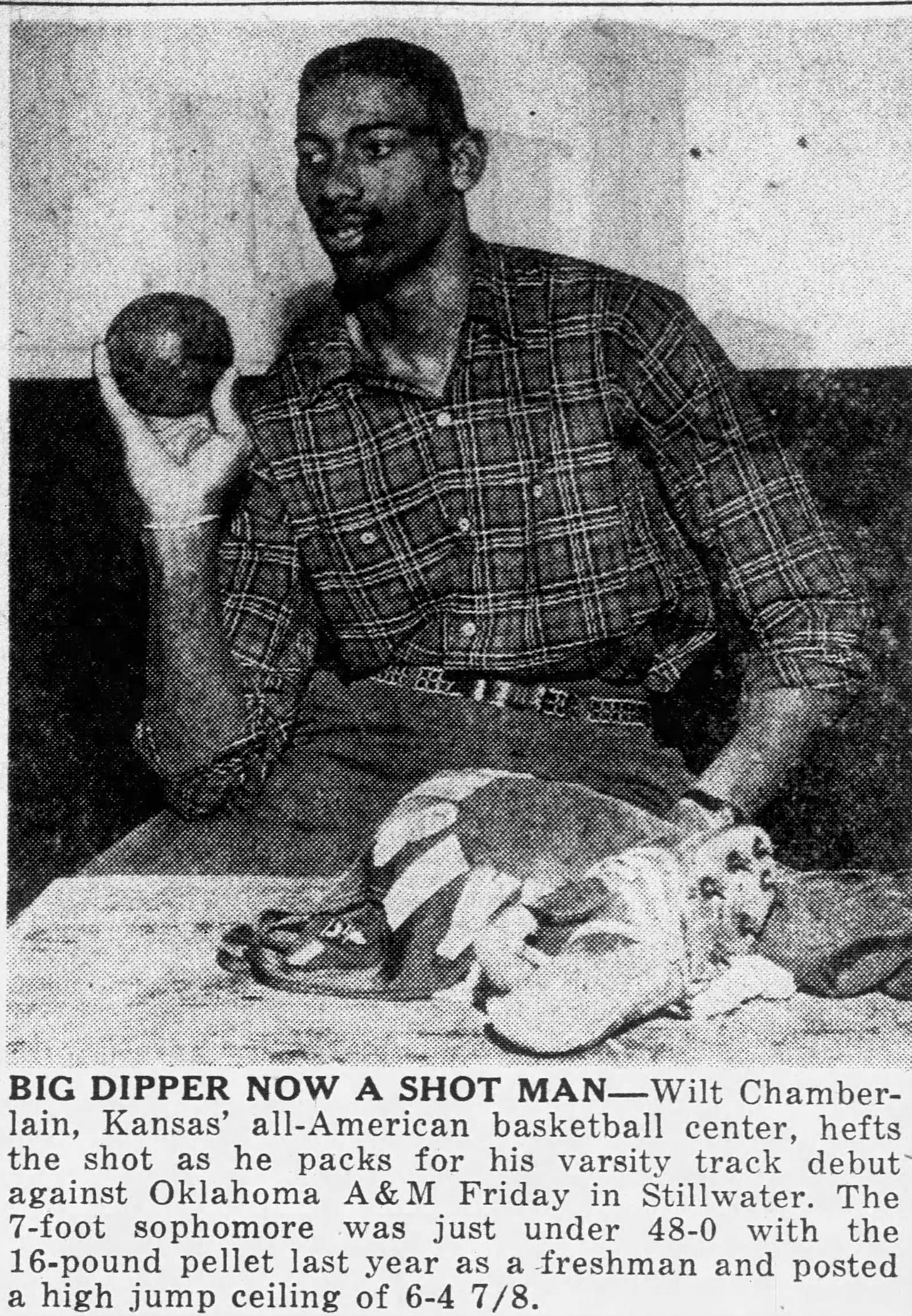Starting Five for Friday: Kansas Jayhawks vs. North Carolina Tar Heels
Two of college basketball's preeminent programs meet on Friday. Let's envision a matchup of their best respective fives all-time.
Kansas and North Carolina are two programs indelibly linked in my mind. Maybe it’s the result of Roy Williams telling Bonnie Bernstein he didn’t “give a shit about North Carolina” moments after the 2003 National Championship Game and just days before being introduced as the Tar Heels' coach.
Perhaps it’s because the earliest Final Four I can recall watching in 1991 pitted Williams’ Jayhawks against Dean Smith’s Tar Heels.
Add that in more recent years, I covered the 2022 National Championship Game between Kansas and North Carolina, and the connections between the programs span pretty much all phases of my basketball-watching life.
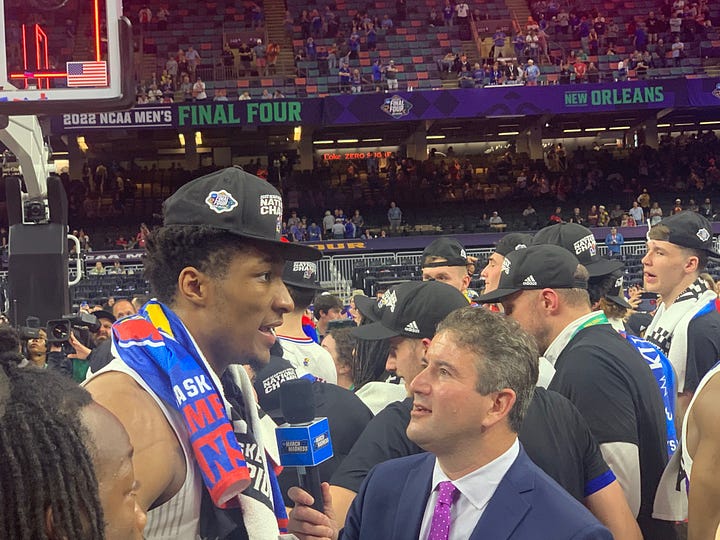
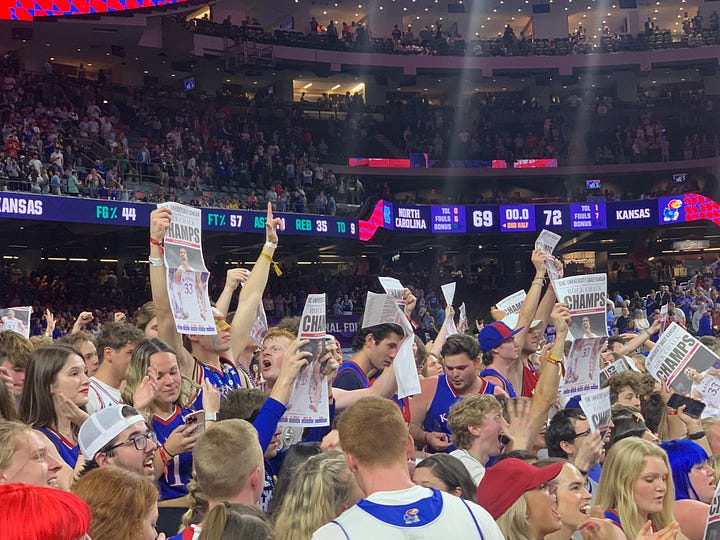
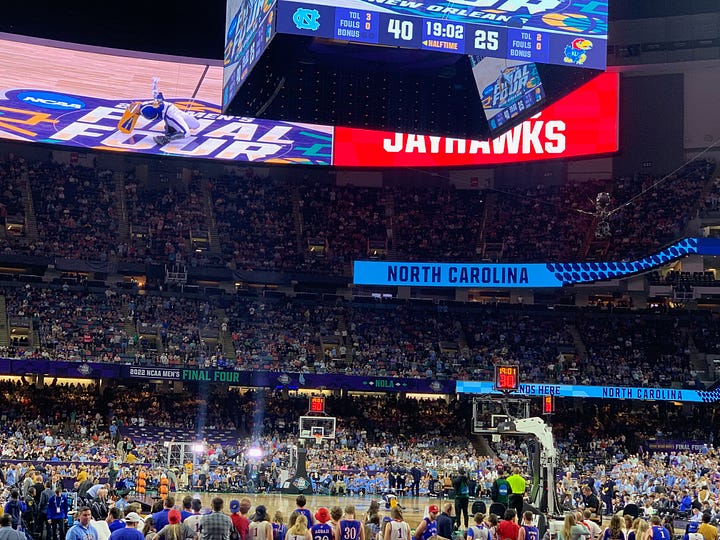
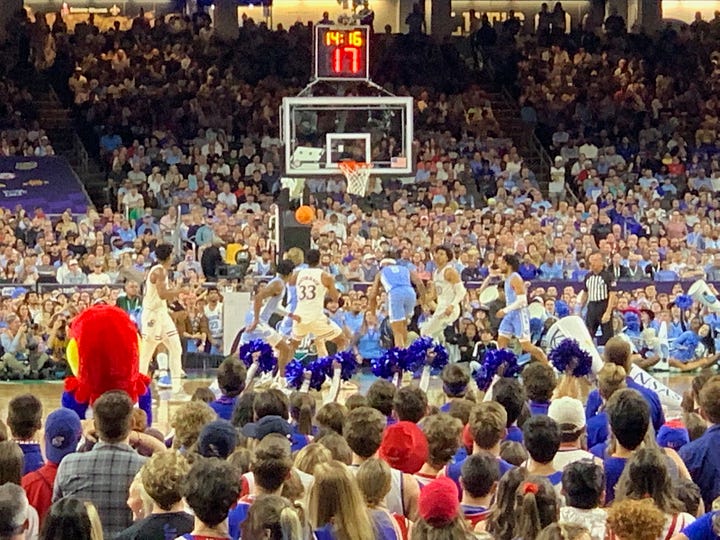
Friday’s matchup is the first between Kansas and North Carolina since that 2022 showdown in New Orleans, and surprisingly, it’s just the 13th all-time. KU’s win 2 1/2 years ago drew the Jayhawks even with the Tar Heels, which seems only fitting for two of the preeminent programs to be a match.
So, with that in mind, The Press Break offers up five all-time legends from both Kansas and North Carolina — one at each traditional position — and calls on you, dear reader, to choose the better lineup.
Check it out and vote below — and if you have an argument with any of the five chosen from either side, state your case in the comments.
Point Guard: Frank Mason III & Phil Ford
Plenty of standout point guards have passed through Lawrence, including two-time Final Four participant Kirk Hinrich, Jacque Vaughn, and Jo Jo White. Frank Mason III is the only Jayhawks point guard to win the Oscar Robertson Trophy as college basketball’s top player, however, doing so in 2017.
Mason became the first point guard to claim the honor since Jameer Nelson in 2004, when FM3 averaged 20.9 points, 5.2 assists, and 4.2 rebounds per game.
Point guards have not won many national Player of the Year honors in college basketball history. In the 40 years from 1977 until Mason’s win in 2017, there were just three point guards to claim the Robertson Trophy. Phil Ford was one of them.
Ford’s recognition as National Player of the Year in 1977-78 capped an incredible career at North Carolina, where he earned 1st Team All-American honors three times and averaged more than 16 points per game all four years he was in Chapel Hill.
Ford also led the nation in assists per game each of his three All-American campaigns, including in ‘78, when he also scored a career-best 20.8 points per game.
Shooting Guard: Darnell Valentine & Michael Jordan
The most famous statement summarizing Michael Jordan’s college career is that the only person who could ever contain the most transformative player in basketball history was coach Dean Smith. That is to say, Jordan’s North Carolina numbers are not as impressive as they could have been had he played in a more free-wheeling system.
Even so, Jordan left Chapel Hill with plenty of damn impressive individual accomplishments. He was a two-time consensus All-American, including in 1983-84, when Jordan claimed most of the National Player of the Year honors.
Jordan shot better than 55 percent from the floor for his career, averaged double-figures all three seasons, and scored in the neighborhood of 20 points per game as a sophomore and junior. He was also among the nation’s best on-ball defenders.
And, of course, any discussion of Jordan’s North Carolina career must include his game-winner in the 1982 National Championship Game.
Jordan’s freshman season immediately followed Kansas combo guard Darnell Valentine’s senior season in Lawrence. The Jayhawks never advanced beyond the Sweet 16 in Valentine’s four years, which could be a ding against his candidacy — especially when 21st-century KU shooting guards Mario Chalmers and Ochai Agbaji played pivotal roles in Jayhawk national championships.
So, I’ll admit to going out on a limb somewhat with this selection. But separating team milestones from individual accomplishments, Valentine’s career stands out as one of the best and certainly among the most underrated ever at Kansas.
Valentine earned All-Big 8 Conference honors all four years he was a Jayhawk thanks to a well-rounded game. He could score, distribute the ball, and defend at a still-unprecedented level, as Kansas’ all-time leader in steals.
He’s also ranked in the top seven all-time at KU in career points and assists.
While accomplishments outside of college are not considered for the purpose of this exercise, it’s worth noting that Valentine was a standout during Olympic workouts in 1980 and could have made an international splash had the U.S. not boycotted the Games.
Small Forward: Paul Pierce & James Worthy
Basketball history may not have a more remarkable wingman than James Worthy, who played alongside three of arguably the five greatest players ever: Magic Johnson, Kareem Abdul-Jabbar, and Michael Jordan.
That said, Worthy was hardly Jordan’s wingman at Carolina; the freshman MJ was the supporting cast on a national championship-winning team with Worthy as its clear star.
The two-time All-ACC honoree did it all for the Heels: scoring, rebounding, defending, and opening the floor for teammates. In 1982, that culminated in his selection as an All-American.
What’s more, Jordan’s iconic jumper in the Superdome never happens without Worthy delivering an all-time great National Championship Game performance with 28 points in the win over Georgetown.
Like James Worthy, Paul Pierce is someone who moved onto NBA greatness and won a championship playing alongside other legends — in his case, Kevin Garnett and Ray Allen.
The 2008 Celtics title gave Pierce the championship that eluded him, including in his time at Kansas. The Jayhawks’ inability to reach the Final Four with the star-studded mid-'90s recruiting crop — headlined by the polar opposites of Inglewood’s Pierce and Iowan Raef LaFrentz — is one of the top examples of March Madness not often crowning the best all-around team as national champion.
All the same, Pierce had a great career in Lawrence before solidifying his Hall of Fame status in the NBA. He averaged at least 11.9 points per game in three years as a starter, and almost seven rebounds per game in both 1996-97 and ‘97-98. In the latter campaign, Pierce scored 20.4 points, grabbed 6.7 rebounds, dished 2.6 assists, and swiped 1.1 steals per game en route to All-American honors.
If nothing else, this is a fun matchup for pitting a kid who grew up in the shadow of the Great Western Forum, following Worthy and the Showtime Lakers, who went on to become a legend for their hated rival, the Boston Celtics.
Power Forward: Danny Manning & Antawn Jamison
Few players live in college basketball lore quite as prominently as Danny Manning. His performance leading Kansas to the 1988 national championship earned that Kansas team the nickname “Danny & The Miracles,” with that six-game run through March Madness putting a fitting punctuation on a tremendous career.
The 1988 NCAA Tournament is hardly the only accomplishment to Manning’s collegiate credit, though. He was one of the best players through the 1980s, a decade that was arguably the Golden Age for college basketball.
Manning was a three-time All-American, including in 1987 and 1988, when he averaged 23.9 points and 9.5 rebounds, and 24.8 points and nine rebounds per game, respectively. His six games in the ‘88 Big Dance might stand out as an outlier of March performances, but his output over that run was pretty much standard operating procedure for his entire junior and senior seasons.
Manning’s collegiate exploits are still celebrated more than 30 years later. Personally, I don’t feel like Antawn Jamison’s excellence at North Carolina has ever been properly appreciated. Maybe it’s because his Carolina contemporary, Vince Carter, was a more exciting player — which immediately carried over into the NBA, catapulting Carter to instant superstardom.
All Jamison did in college, though, was dominate with a well-rounded style. After flirting with a double-double per-game average as a freshman and sophomore, he reached that milestone in 1997-98: 22.2 points, 10.5 rebounds per game, earning the Naismith Award and Associated Press Player of the Year.
Jamison was also the best player on back-to-back Final Four teams.
Center: Wilt Chamberlain vs. Tyler Hansbrough
We’ll start with the necessary caveat: Tyler Hansbrough wasn’t really a center. However, in his four seasons as a starter and the soul of North Carolina basketball, Hansbrough played in something of a positionless system where his physicality in the paint made him function like a center.
So, with all due respect to past Tar Heel posts like Brad Daugherty, Sean May, and Eric Montross, I must give the nod to Psycho T.
Hansbrough was an All-American all four years he spent at North Carolina, including in 2007-08 when he swept National Player of the Year honors. He averaged a double-double with 22.6 points and 10.2 rebounds per game as he became the face of college basketball.
And for that reason, Hansbrough was resented. His UNC career overlapped with Tim Tebow’s at Florida, and there were very similar levels of fawning for the two. Hansbrough winning the Naismith, Robertson, and AP awards just a few months after Tebow won the Heisman was exhausting.
Still, Hansbrough deserved it. Bonus points to the Carolina big man, too, for not being nearly as obnoxious post-college as Tebow.
On the other end is maybe the most individually dominant player in history — which also clouds how he’s viewed.
Wilt Chamberlain played in the first-ever meeting between Kansas and Carolina, the 1957 National Championship Game.
The triple-overtime Tar Heels win was the first in a career-long run of championship disappointments for Wilt. In the NBA, Bill Russell’s Boston Celtics were constant hurdles too tall for the otherworldly Chamberlain. In college, it was a four-corner offense that kept the ball away from Wilt for as long as possible, en route to a 54-53 North Carolina win.
All the same, Chamberlain’s two years at Kansas produced some of the most impressive statistics in college basketball history. He put up 29.6 points and 18.9 rebounds per game as a sophomore in 1956-57, and 30.1 points with 17.5 rebounds per game the following year.
Had blocked shots been tracked, there’s a good chance Wilt would have been in triple-double territory.
A Brief, Incomplete History of NCAA Tournament Triple-Doubles
Welcome Illinois wing Marcus Domask to the exclusive club of players to record triple-doubles in the NCAA Tournament. Star of Thursday’s 1st Round early window, Domask went for 12 points, 11 rebounds and 10 assists as the Illini surged from a near-stalemate at halftime to rout Morehead State.
Even without his blocks recorded, Wilt was an All-American both years he spent at Kansas before joining the Harlem Globetrotters.
And if there’s any doubt about just what an athletic anomaly Wilt was, he is presumably the only standout hooper in the illustrious histories of both Kansas and North Carolina to have also excelled in as varied a track and field itinerary as high jump and shot put.






